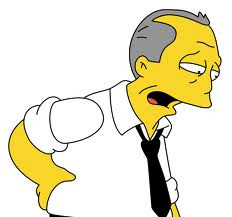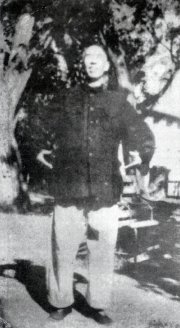05 Sep Waking up the feet.
 Ok thanks to some strong coffee this morning I’m finally inspired to finish off this post, several months after I started it. Guess what? It’s going to be about bodymaps and neuroplasticity. Craig (fellow Canberran, natural movement and meditation enthusiast and trainer) and I did some filming of a series for “waking up the feet”.
Ok thanks to some strong coffee this morning I’m finally inspired to finish off this post, several months after I started it. Guess what? It’s going to be about bodymaps and neuroplasticity. Craig (fellow Canberran, natural movement and meditation enthusiast and trainer) and I did some filming of a series for “waking up the feet”.
As you can see, it’s a bunch of movements performed with awareness which direct movement and effort into different parts of the feet and ankles. Switching on the toes and differentiating the movements of the toes, feet, ankles, knees and hips is all a lot of work for the brain – try it. Brain circuits which are used get stronger and faster: just doing these movements will update the many maps in the brain devoted to the toes, feet, ankles, lower legs, knees, thighs, groin and hips. Doing the movements carefully, with awareness and attention, will massively increase the neuroplastic (“brain changing” AKA “LEARNING”) effects. These bodymaps in the brain are not limited to the primary somatosensory cortex and motor cortex. There are also topographical maps of the body in the cerebellum, in the parietal association areas, in the insula of both the left and right hemispheres, and in the cingulate gyrus – just that I know of! – all very closely connected to each other and to other maps in our brains which combine data from the various senses (including the body-sense) to represent the three dimensional space around us.
Now an interesting thing about all of these bodymaps is that they are not just in areas of the brain that allow us to balance and move around in a coordinated way or to feel things like pressure, temperature or touch of different kinds, they are also in parts of the brain responsible for things like emotion, empathy, and self-awareness. So these maps are not just about what these things (toes, feet, whatever) are doing or touching or where they are but also about how we feel about what they’re doing, how we feel about what they’re touching, how we feel about where they are – these maps don’t just tell us how our feet feel, they tell us how we feel about how they feel!
Now then, we know we’ve got some movements which fire up the brain circuits responsible for how these different bits of our feet and legs feel and move. We know that doing these movements will induce some neuroplastic changes in the bodymaps devoted to these areas. We also know that more intense attention and careful movement will increase these neuroplastic learning effects. We now know that these bodymaps are intimately involved in our emotional states and how we feel about ourselves.

So, I now propose that this means we can change not only how our feet feel, we can change how we feel about them, and this will change how they feel to us. Basically, as we do the movements or even imagine them, we can observe our mental/emotional state as it manifests in our heart rate, breathing patterns and tension or movement in the rest of the body. Apprehension, fear, frustration and anger, sadness, helplessness, hopelessness, self-hatred, memories and emotional residues linger on in our bodies long after the original injuries or traumatic incidents, because of these interconnected bodymaps in the brain. Parts of the body get labelled as “weak” or “ugly” or “annoying”, “my bad hip” etc, and we often start to either block them out (“put some shoes on those weird-looking feet! Stop that running you’re not good at it, people laugh at you, and besides you hurt your ankle. Get into reading, use your head, forget about your feet!”) or to continually remind ourselves of how bad they feel and how bad we feel about them (“does my hip still hurt?” *does the exact movement which always re-hurts the hip* “Yes! IT STILL HURTS! I HATE IT!).
So this is my current working model of what “Yoga” is and how it works with regards to physical practices involving movement or different positions of different body parts:
1) Calm down, pay attention, deliberately cultivate a feeling of pleasantness in the body, especially in the face, eyes, and breath. Feel the relaxation cascade through the whole body in response to relaxing the face and eyes.

2) perform some sort of movement or series of movements which draws attention to (and thus increases awareness of) a particular part of the body. This can be very gentle or very strenuous, gentle movements will help to feel more subtle processes, strenuous movements will help to feel more muscular engagement. Either way, the movement should demand the maximum possible concentration, in order to stimulate the maximum possible neuroplastic effect.
3) rest with full awareness and attention on the residual sensations in the area which has just been explored, and integrate these sensations while repeating and deepening step 1. This is the crucial step in which the parts of the body maps in the brain relevant to this area are still buzzing, the area will feel tingly, pulsating, there will be more sensations of blood flow and warmth (the interoceptive sensations, one level deeper than the sensations of muscular effort and joint movement felt during the exercise in step 2). During this crucial time of increased sensitivity to the area that has been explored we have the opportunity to integrate it into a new and updated body map or “self image”. While we pay attention to the residual sensations as we rest after the exploratory exercise, we repeat step 1: even more deeply relaxing the face and eyes, allowing them to smile and express the deepest and most radiant sense of peace and joy, allowing this smiling feeling to deeply permeate the entire flow of breath and cascade through the whole body and essentially “welcome” the new pleasant feelings in the area we have just explored (say, the feet) into our “new improved” updated sense of our body, our self.

We can make this process even more powerful by imagining, kinesthetically, in our body while we do this what it will feel like in the future, in three or six months time, a year’s time, five year’s time, after practicing these movements and awareness techniques consistently. How strong and agile and conscious our feet will be! How great that will be for walking, running, climbing (the joy of strong monkey-like toes!), on grass, on rocks, in trees. How amazing it will be to have strong conscious feet supporting our posture just in standing, how relaxed the rest of the body will become with that dynamic, sensitive support at ground level. ETC

How does it work? – What’s happening in the brain?
Firstly, in step one, we’re firing up the “executive control” areas of our brain: the famous prefrontal cortex, areas responsible for directed attention and self awareness. We’re then consciously relaxing and cultivating the feeling of pleasantness and joy, which links those prefrontal areas to the deeper areas associated with emotional state (the so-called “limbic system) and those responsible for autonomic function (the “fight or flight” vs. “rest and digest”, stress response vs. relaxation response).

In step two, we’re firing up the particular parts of our body maps relevant to the specific areas of the body that we are exploring through movement in three dimensions: the somatosensory cortex, motor cortex, parietal association areas, cerebellum, etc.
Then in step three, we calm down again and focus on the residual sensations of tingling, warmth and blood flow, and integrate this new information still buzzing in our nervous system from step two, with the repeated practice of step one – thus physically, structurally improving the neural connections between these parts of our body maps and those areas from step one associated with autonomic (stress vs. relaxation) emotion (joy and peace vs. hatred, fear etc) and self-image.
http://www.youtube.com/watch?v=vESKrzvgA40
Remember the catch phrase of neuroplasticity: “neurons that fire together, wire together”. And that’s it. (My current working model of how such practice works to rewire the brain).
An important point I’d like to make here is that it does not matter one bit what movements we use to explore a particular part of the body! It’s not the shape of the movements which makes it “Yoga”, it’s the process of exploration and the updating of the self image. Ideally, each part of the body should be explored systematically with (100% pain free) movement in three planes of motion, weight bearing and non-weight bearing. This will teach us how this area moves and how it relates to the other parts of the body above and below it (ie how the feet and toes relate to the ankles, how they relate to the knees, the hips and pelvis, the center of gravity and the spine up to the head, etc). It is thus perfectly acceptable (and often preferable) to spontaneously or systematically create our own movements, without reference to any particular tradition.
Like Dave has done here:
http://www.youtube.com/watch?v=glWRvN0XYb8
You get the idea!


Gonzalo
Posted at 14:25h, 05 SeptemberLove it
I am thoroughly enjoying your work
simon
Posted at 21:59h, 05 SeptemberHey nice one Gonz! Good to hear from you mate 😀